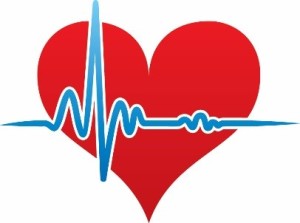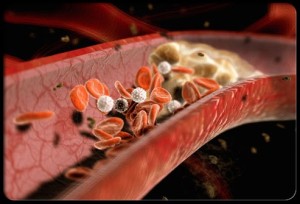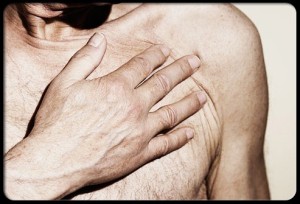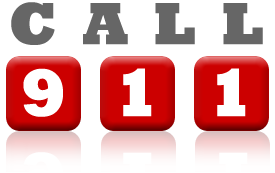
Heart Attack
Heart attack, or myocardial infarction, is the number one killer of both men and women in the U.S. Each year, about 1.1 million Americans suffer a heart attack, and 460,000 of these are fatal. Those who reach the emergency room have an excellent prognosis; survival from a heart attack with modern treatment should exceed 90%. The 1% to 10% of heart attack victims who die later include those victims who suffer major damage to the heart muscle initially or who suffer additional damage at a later time.
Inside a Heart Attack
Plaque in coronary (and other) arteries maybe hard or firm on the outside but soft, mushy, and sticky on the inside. If the hard shell-like area cracks open, then blood components exposed to the sticky areas collect and can form a blood clot and quickly block most or all of the blood flow through the artery. The heart tissue downstream from the clot then suffers from lack of blood and becomes damaged or dies.
Not All Heart Attacks are Alike
Did you know you can have a heart attack and not feel any chest pains? Heart failure and heart disease don’t show the same signs for everyone, especially women. There are many things that can contribute to a heart attack, including age, heredity, high blood pressure, high cholesterol, obesity, poor diet, alcohol consumption, stress, and physical inactivity.
Early Heart Attack Symptoms
Not every heart attack displays the same symptoms as those we may see on the many medical TV shows we are exposed to daily. In fact, many people ignore the early signs of a heart attack, simply dismissing the more subtle symptoms because they expect the drama associated with a Hollywood episode. Unfortunately, when these early signs are ignored, we miss a "window of opportunity" to prevent the attack before any heart damage can occur. The following signs and symptoms are ones to be aware of in yourself or in your family members:


- Shortness of Breath without Exertion
Exhaustion and shortness of breath are two ways your body tells you it needs rest, but it can also be a sign of heart trouble as a response to the extra stress on your heart. If you often feel tired or exhausted for no reason, it could be a sign that something is wrong. Although most of us experience shortness of breath when we are exercising or expending energy outside of what we do normally, difficulty breathing when performing normal activities is an early sign that should be investigated. Fatigue and shortness of breath are more common in women and may begin months before a heart attack (AHA, 2013). - Heartburn
The sensation of heartburn or a burning in the chest can be mapped to spicy food and quickly discarded. This sensation can also be an early sign of a heart attack, especially if the condition becomes chronic. If you find yourself taking over-the-counter antacids on a regular basis, the underlying cause of your trouble needs to be discussed with your doctor. - Discomfort or Pain
While chest pains do not occur in every heart attack, they are the most recognizable symptom for good reason. Chest tightness is a common sign of a heart attack. People have described this sensation as feeling like an elephant is standing on their chest. But, these pains do not have to occur in the area of the heart. Pain and tightness can also radiate in other areas of the body. Most people associate a heart attack with pain working its way down the left arm. That can happen, but pain can also appear in other locations, including:- upper abdomen
- shoulder
- back
- throat
- teeth or jaw
Always seek immediate attention if you are experiencing this type of pain, even if the symptoms disappear or are only intermittent. If you experience chest pains or tightness, you or someone around you should call 911 immediately (NHLBI, 2011)

A Feeling of Impending Doom
Some patients describe a feeling of anxiety and fear prior to the occurrence of a heart attack. Although not usually thought of as an early symptom, and certainly attributable to other matters, this "feeling" can still be an early indicator, especially when combined with any of the other symptoms listed above.
Sweating – Day and Night
Sweating more than usual—especially if you aren’t exercising or being active—could be an early warning sign of heart problems. Pumping blood through clogged arteries takes more effort from your heart, so your body will sweat more to try to keep your body temperature down during the extra exertion. If you experience cold sweats or clammy skin, then you should consult your doctor.
Night sweats are also a common symptom for women experiencing heart troubles (IHS, 2012).
What to do if you think you are having a Heart Attack
One of the most important aspects of treating myocardial infarction (heart attack) is speed. The faster you act to get help and treatment, the better your chances for survival and a full recovery. If you think you are having a heart attack, you or someone nearby should call 911 immediately. If you’ve been prescribed heart medication and experience heart troubles, follow your doctor’s instructions. Even something as simple as taking aspirin can prevent the clot from becoming worse (AHA, 2012). If treatment of the blockage can be administered within a couple of hours of the onset of symptoms, the risk of severe damage to the heart is lowered.

Heart Attack Treatments
Emergency personnel are trained to provide treatments even before a heart attack is diagnosed. These treatments include:
- oxygen therapy
- aspirin
- nitroglycerin
The goals of these treatments include:
- stabilizing the heartbeat
- preventing more clotting
- easing chest pain
Automatic external defibrillators (AEDs) may be used to jolt your heart back into a normal rhythm. Morphine, oxygen, aspirin, and nitroglycerin are often used in the first 30 minutes following the start of heart attack symptoms to prevent more clotting and to treat pain.
Procedures to Treat Heart Attacks
Fortunately, procedures such as coronary angiogram and PTCA (coronary balloon angioplasty), and clot dissolving drugs are available that can quickly open blocked arteries in order to restore circulation to the heart and limit heart muscle damage. In order to optimally benefit heart attack victims and limit the extent of heart damage, these treatments to open blocked arteries should be given early during a heart attack.
Your doctors will determine if you need more than medication to treat your heart attack. The following procedures are commonly used.
Angioplasty is a procedure to open the coronary arteries and restore blood flow to the heart. According to the National Institutes of Health, more than 1 million people in the United States undergo the procedure each year. During an angioplasty procedure, a small tube (catheter) with a balloon on the tip is threaded into the arteries. This is usually done through a vessel in the groin area or through an artery that starts in the wrist. When the balloon is in position in a coronary artery with a blockage, it’s expanded. It pushes plaque away, widens the artery, and allows blood flow to return to the heart. Sometimes a small mesh tube called a stent is placed into the artery to support the artery walls and reduce the chance of future narrowing or blockage.
Bypass surgery is another common and effective way to restore blood flow to the heart after a serious heart attack. During the surgery, arteries or veins from other parts of the body (grafts) are used to create alternate routes for blood to flow around the blocked artery. The number of grafts used depends on how many arteries are blocked. A triple-bypass surgery is when three grafts are used to bypass three blocked areas in the coronary arteries.

Treatment after the Attack
Treatment will depend on how severe your heart attack is. There are many different kinds of heart attack treatments. These include medications, interventional procedures, and surgery. Medications can be an effective tool in treating a heart attack and preventing future attacks. The most commonly used medications for treatment of heart attack include the following.
Thrombolytic Medicines (Clot Busters)
Thrombolytic medicine is most effective if given within three hours of a heart attack. It’s beneficial if administered within 12 hours. It’s injected into the blood intravenously (IV). The medicine dissolves blood clots so blood can flow through the coronary artery again.
These drugs are used in combination with other treatments, and they can have adverse side effects like bleeding or hemorrhagic stroke. If blood flow does not return to normal, additional treatments or surgery may be required.

Beta Blockers
Beta blockers are a class of medications used to treat high blood pressure as well as other diseases and conditions. These medicines make it easier for your heart to do its job by blocking the effects of adrenaline and slowing the heart rate and the decreasing the force of heart muscle contradiction (i.e. the work the heart has to do). Beta blockers are used to relieve chest pain after heart attack.
ACE Inhibitors
Like beta blockers, angiotensin-converting enzyme (ACE) inhibitors treat high blood pressure and other conditions. ACE inhibitors help relax and widen the blood vessels by blocking the production of an enzyme that causes the vessels to narrow. ACE inhibitors can improve blood flow, reduce strain on your heart, and help heal heart muscle damage after a heart attack.
Anticoagulants
Anticoagulants reduce the risk of clotting in heart attack patients. They are more commonly referred to as blood thinners.
Antiplatelet Agents
Aspirin is the most well-known type of antiplatelet medicine. These types of drugs prevent clotting in the arteries by keeping platelets from sticking together. Antiplatelet agents are typically used by people who have had a heart attack and are at risk for additional clotting. Antiplatelet medications can also be used to treat people with several risk factors for heart attack and with evident plaque buildup in the arteries.
Cholesterol-Lowering Drugs
These drugs lower cholesterol. They are commonly prescribed drugs for people with high cholesterol who have never had a heart attack. However some of them have been shown to improve survival when administered soon after a heart attack.
Additional Treatments for Heart Attack
Alternative treatment is not appropriate when heart attack symptoms are present. Symptoms of a heart attack require immediate medical attention. A heart attack is a life-threatening event and should be immediately treated by trained emergency medical providers.
However, alternative treatments and lifestyle changes can improve your heart health and reduce your risk of a heart attack. Always consult your doctor before trying any alternative treatments. It’s important to ensure that they will not interfere with medications you may be taking. Remember that a healthy diet and lifestyle are essential in maintaining a healthy heart.
The following treatments are NOT to be used during an actual or suspected heart attack. They might be used to reduce your risk of having a heart attack or as part of a holistic treatment plan after you have experienced a heart attack and received appropriate medical attention and treatments.
Diet
A healthy diet is a necessary aspect of heart health and is crucial in preventing coronary artery disease and heart attack. There are many studies that examine the role of specific foods and herbs on heart health. In general, maintaining a healthy diet rich in fruits, vegetables, whole grains, and lean proteins is an effective way to maintain a healthy heart. Stay away from processed foods, as well as those that are high in fat and sugar.
The American Heart Association (AHA) recommends eating omega-3 fatty acids at least twice a week. This type of fat may reduce the risk of heart disease. These fats are found in cold-water fatty fish like salmon, herring, sardines, and mackerel. Up to 90 percent of Americans do not get enough omega-3 fatty acids from their diets. Supplements might be appropriate to ensure adequate intake.
Supplements of omega-3 fatty acids should be taken only with your doctor’s supervision. High doses can cause bleeding. Use with caution if you have a bleeding disorder, bruise easily, or are taking drugs that interfere with blood clotting such as warfarin or aspirin.
Regular Exercise
Exercise is important for maintaining heart health. It helps lower blood pressure, cholesterol, and control weight. It doesn’t need to be strenuous exercise. Walking for 30 minutes five times a week can make a noticeable difference. Talk to your doctor before starting an exercise program. If you have had a heart attack, you want to be sure your heart is ready for exercise.
Meditation
Studies have shown that daily meditation can reduce stress and lower blood pressure. Stress and high blood pressure are risk factors for coronary artery disease and heart attack. There are many forms of meditation, including:
- guided meditation
- mantra meditation
- mindfulness meditation
- qigong
- tai chi
- yoga
Any of these might be beneficial. It’s not necessary to follow any particular form of meditation. You might just sit comfortably, close your eyes, and repeat a word or phrase for approximately 20 minutes. The idea is to quiet your mind and to let mind and body connect and relax.
If you are at risk for heart attack and heart disease, it is important to make smart choices with your diet, exercise, and stress management. Check out these resources to find the information you need:
